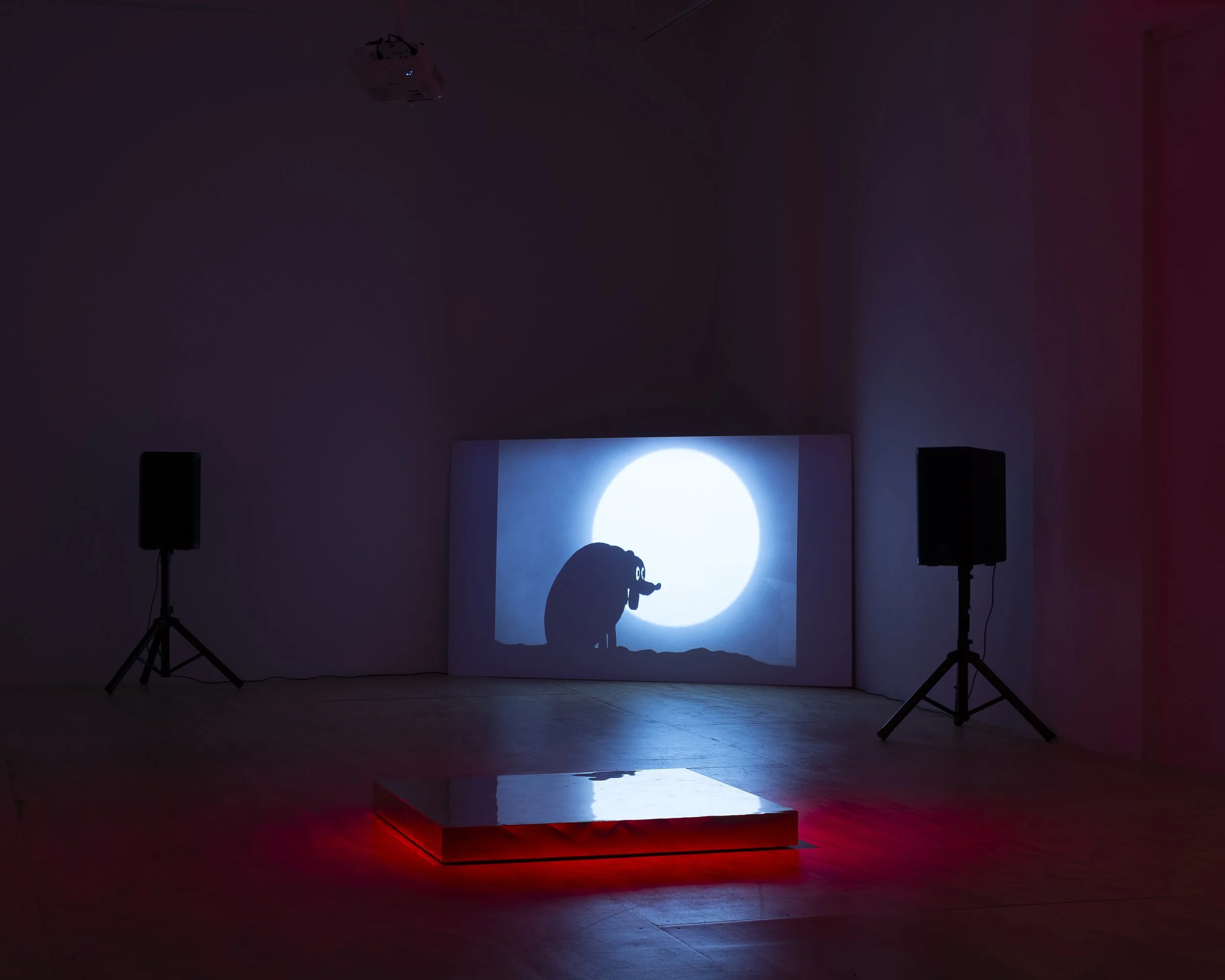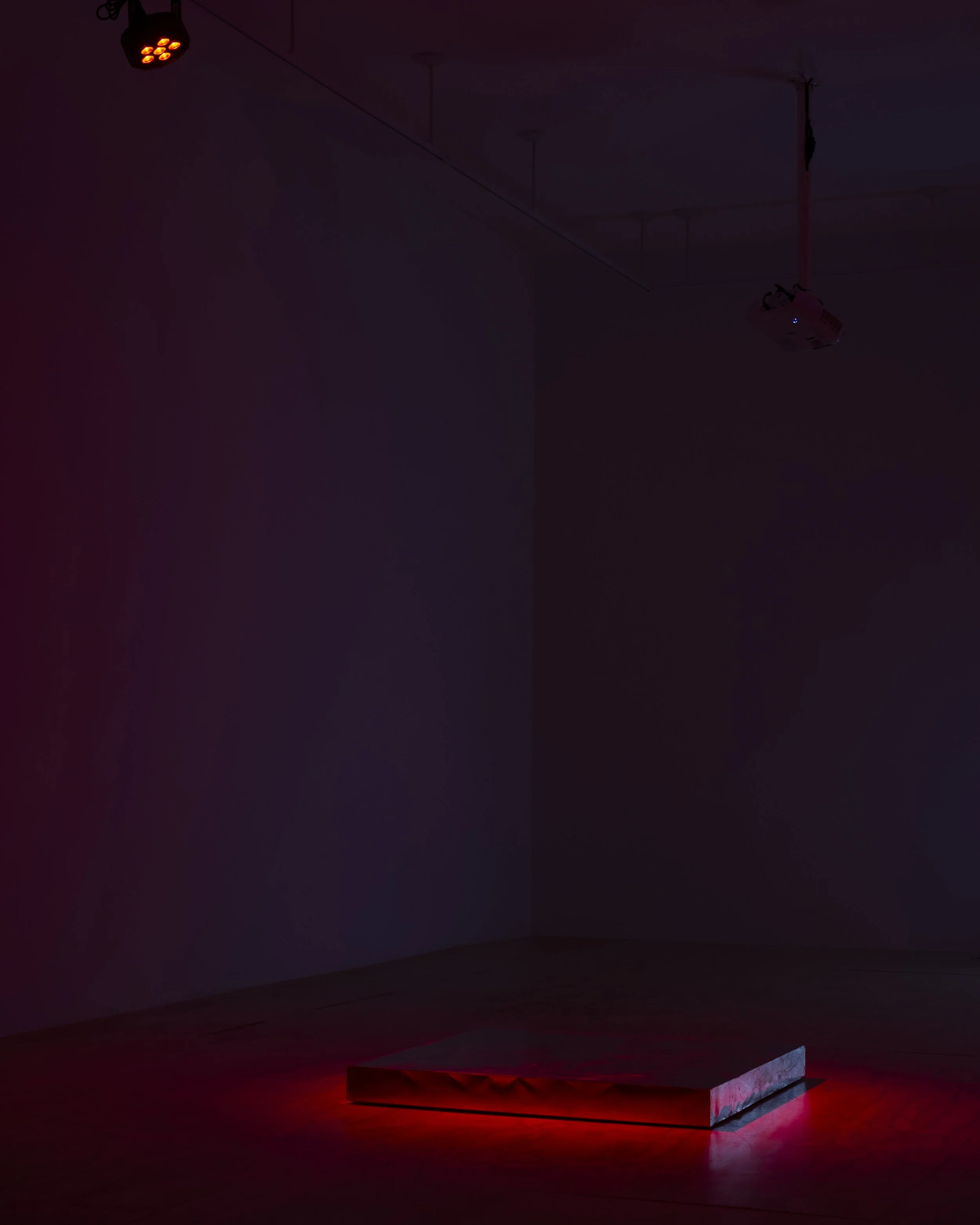Haig Aivazian. You May Own the Lanterns, but We Have the Light,
(Ep.1 Home Alone), 2022.
Haig Aivazian
I Go to Sleep, but Sleep
Doesn’t Come to Me
March 16, 2024 – April 13, 2024
Democracies are full of holes. Through these holes rushes a light that sculpts how public space is used, dwelled in and moved through. This luminescence regulates time too, like “lights out!” for prisoners, or “you had best be getting home now!” for those under curfew on the outside.
Bearing the ideology of enlightenment, light is an intense beam which illuminates the dark histories of modernity. Hard labor was organized around the need for light - from picking cotton for wicks, to bludgeoning sperm whales to extract oil, to the precarious work of lamplighters roaming the streets at dusk and dawn. As cities got more densely populated, police forces were formalized, and lighting the streets became a central tool for crime reduction. Over time, public lighting became unobtrusive, conveniently ushering safe passage, shielding from the ills that lurk in the dark, outside the warm glow of lanterns.
Today, street lighting is key to smart cities, organizing them in the image of the smooth frictionless flows of neoliberalism. In the words of one anarchist collective, “The Metropolis… is also a flow of beings and things, a current that runs through fiber-optics networks.” Electricity is the very matter of this flow, and street lighting, as one advertisement put it, has become “a means of innovation, reorganization and urban planning.”
Yet in Lebanon, where I live, known for its take-no-prisoners neoliberalism, everything is friction and nothing works. Gasoline trickles and we are drowned in incessant blackouts. In Gaza where dear ones die, the Israeli occupiers declare that Palestinians are “the sons of darkness,” and that the settlers are “the sons of light” before they cut-off power from an entire population, and light up their skies with genocidal violence in the form of flare bombs and belts of fire. What kinds of governmentalities are these then? And what kinds of collective practices do we need to be engaged in to defend ourselves and assure our survival?
h.a.
I go to sleep, but sleep doesn’t come to me, an exhibition by Haig Aivazian puts in relation past works with fragments of upcoming lines of inquiry that explore night as a space of alternating configurations of social visibility. In a loop, alternating between video, sound and sculpture, the works inhabit various irreconcilable contradictions, ambiguities, and double agencies.
In the black and white animated video You May Own the Lanterns, but We Have the Light, Episode 1, (2022); and the audio piece I Go to Sleep, but Sleep Doesn’t Come to Me (2023) composed by Noise Diva (Yara Said) for the upcoming episode 2 , Aivazian considers the often sticky ambivalence between dancing as an act of collective resistance and dancing on graves in oblivious bliss. In a series of engraved copper plates, Beacons and Pillars (2024), produced in residency at the Robert Blackburn Print workshop (EFA-RBPW) with master printer Jazmine Catasús, Aivazian continues his long-standing work with found imagery, cropping out and reproducing etchings of torch bearers and smoke from colonial expedition illustrations. It is unclear whether the torches are beacons leading masses into the light, or burning and looting in the name of so-called civilization. Laser lights and smoke in the exhibition space stir further ambiguity, collapsing elements from the nightclub, the street and the war-zone.
The title of the exhibition is borrowed from an Iraqi mawwal in the voice of an amorous insomniac who wonders: “How can I sleep when I am in this state? My heart is wrapped around a dagger.” Aivazian adapts this sentiment to echo a state of political vigilance in the face of mass denialism.
I go to sleep, but sleep doesn’t come to me by Haig Aivazian is on view at Brief Histories from March 16, 2024 to April 13, 2024. Thursday-Saturday 12pm–6pm.
















